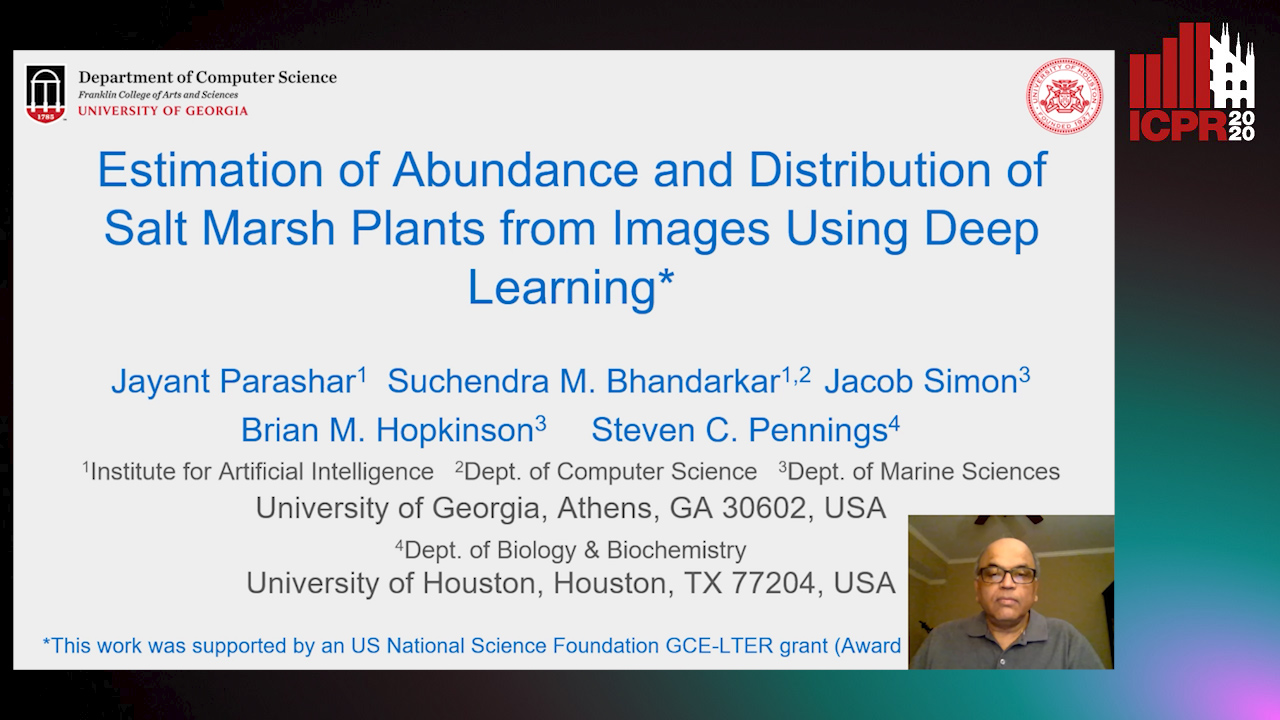Jayant Parashar
Paper download is intended for registered attendees only, and is
subjected to the IEEE Copyright Policy. Any other use is strongly forbidden.
Papers from this author
Estimation of Abundance and Distribution of SaltMarsh Plants from Images Using Deep Learning
Jayant Parashar, Suchendra Bhandarkar, Jacob Simon, Brian Hopkinson, Steven Pennings

Auto-TLDR; CNN-based approaches to automated plant identification and localization in salt marsh images
Recent advances in computer vision and machine learning, most notably deep convolutional neural networks (CNNs), are exploited to identify and localize various plant species in salt marsh images. Three different approaches are explored that provide estimations of abundance and spatial distribution at varying levels of granularity in terms of spatial resolution. In the coarsest-grained approach, CNNs are tasked with identifying which of six plant species are present/absent in large patches within the salt marsh images. CNNs with diverse topological properties and attention mechanisms are shown capable of providing accurate estimations with >90 % precision and recall in the case of the more abundant plant species whereas the performance declines for less common plant species. Estimation of percent cover of each plant species is performed at a finer spatial resolution, where smaller image patches are extracted and the CNNs tasked with identifying the plant species or substrate at the center of the image patch. For the percent cover estimation task, the CNNs are observed to exhibit a performance profile similar to that for the presence/absence estimation task, but with an ~ 5-10% reduction in precision and recall. Finally, fine-grained estimation of the spatial distribution of the various plant species is performed via semantic segmentation. The Deeplab-V3 semantic segmentation architecture is observed to provide very accurate estimations for abundant plant species; however,a significant degradation in performance is observed in the case of less abundant plant species and, in extreme cases, rare plant classes are seen to be ignored entirely. Overall, a clear trade-off is observed between the CNN estimation quality and the spatial resolution of the underlying estimation thereby offering guidance for ecological applications of CNN-based approaches to automated plant identification and localization in salt marsh images.